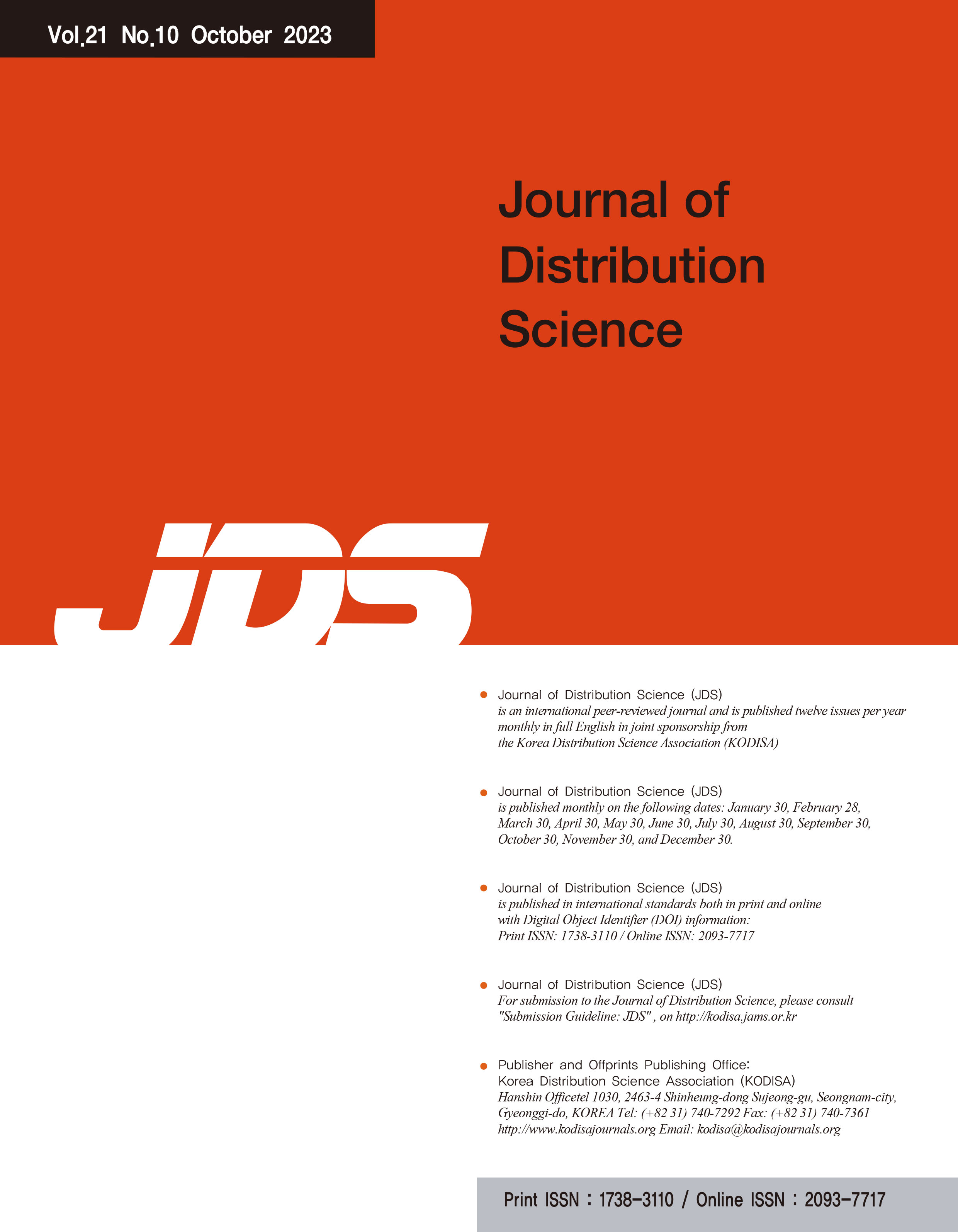 ISSN : 1738-3110
ISSN : 1738-3110
Study on Consumer Preferences for Discount Presentations in Different Purchase Contexts
DUAN, Shen
Abstract
Purpose: There is still lack of guidance for merchants toward price discount presentations (absolute/relative), especially for consumers in different purchase contexts. Based on the general evaluability theory, this study investigates consumers' preferences for the presentation of discounts in various contexts through experiments. Research design, data and methodology: The relationship between discount presentation and consumers' preference is investigated in Study 1 using a two-factor between-subject design of 2 (purchase type: material vs. experiential) ×2 (discount type: absolute vs. relative). The Moderating effect of thinking mode has been examined in Study 2 via a multi-factor intergroup design of 2 (purchase type: material vs. experiential) ×2 (discount type: absolute vs. relative) ×2 (cognitive load: high vs. low). One-way ANOVA and planned contrast have been performed for analysis. Results: Experiment 1 reveals that consumers prefer absolute discounts rather than relative discounts when in material purchases. However, when in experiential purchases, they are willing to choose relative discounts. Experiment 2 verifies the boundary conditions of matching effect and illustrates the generation of matching effect is determined by thinking mode. Conclusions: Our study enriches the theories of purchase type and thinking mode. Simultaneously, the results provide practical guidance for merchants to formulate the discount presentation and distribution pricing strategies.
- keywords
- Discount Presentations, Purchase Type, Thinking Mode, Cognitive Load, Distribution Price
Reference
Biswas, A., Bhowmick, S., Guha, A., & Grewal, D. (2013). Consumer evaluations of sale prices: Role of the subtraction principle. Journal of Marketing, 77(4), 49-66.
Caprariello, P. A., & Reis, H. T. (2013). To do, to have, or to share? Valuing experiences over material possessions depends on the involvement of others. Journal of Personality and Social Psychology, 104(2), 199-215.
Carter, T. J., & Gilovich, T. (2010). The relative relativity of material and experiential purchases. Journal of Personality and Social Psychology, 98(1), 146-159.
Dai, H., Chan, C., & Mogilner, C. (2020). People rely less on consumer reviews for experiential than material purchases. Journal of Consumer Research, 46(6), 1052-1075.
Dunn, E. W., & Weidman, A. C. (2015). Building a science of spending: Lessons from the past and directions for the future. Journal of Consumer Psychology, 25(1), 172-178.
Goodman, J. K., & Lim, S. (2018). When consumers prefer to give material gifts instead of experiences: The role of social distance. Journal of Consumer Research, 45(2), 365-382.
Hardesty, D. M., & Bearden, W. O. (2003). Consumer evaluations of different promotion types and price presentations: The moderating role of promotional benefit level. Journal of Retailing, 79(1), 17-25.
Häubl, G., & Trifts, V. (2000). Consumer decision making in online shopping environments: The effects of interactive decision aids. Marketing Science, 19(1), 4-21.
Hsee, C. K., Yang, Y., Gu, Y., & Chen, J. (2009). Specification seeking: How product specifications influence consumer preference. Journal of Consumer Research, 35(6), 952-966.
Kumar, A., & Gilovich, T. (2015). Some “thing” to talk about? Differential story utility from experiential and material purchases. Personality and Social Psychology Bulletin, 41(10), 1320-1331.
Kumar, A., & Gilovich, T. (2016). To do or to have, now or later? The preferred consumption profiles of material and experiential purchases. Journal of Consumer Psychology, 26(2), 169-178.
Kwan, C. M. C., Dai, X., & Wyer, R. S. (2017). Contextual influences on message persuasion: The effect of empty space. Journal of Consumer Research, 44(2), 448-464.
Kahneman, D. (2011). Thinking fast and thinking slow. Farrar, Strauss and Giroux, New York, NY (p. 499). Penguin Random House UK.
Ma, J., & Roese, N. J. (2013). The countability effect: Comparative versus experiential reactions to reward distributions. Journal of Consumer Research, 39(6), 1219-1233.
McKechnie, S., Devlin, J., Ennew, C., & Smith, A. (2012). Effects of discount framing in comparative price advertising. European Journal of Marketing, 46(11), 1501-1522.
Monga, A., & Bagchi, R. (2012). Years, months, and days versus 1, 12, and 365: The influence of units versus numbers. Journal of Consumer Research, 39(1), 185-198.
Nicolao, L., Irwin, J. R., & Goodman, J. K. (2009). Happiness for sale: Do experiential purchases make consumers happier than material purchases? Journal of Consumer Research, 36(2), 188-198.
Palmeira, M. M. (2011). The zero-comparison effect. Journal of Consumer Research, 38(1), 16-26.
Tully, S. M., Hershfield, H. E., & Meyvis, T. (2015). Seeking lasting enjoyment with limited money: Financial constraints increase preference for material goods over experiences. Journal of Consumer Research, 42(1), 59-75.
Van Boven, L., & Gilovich, T. (2003). To do or to have? That is the question. Journal of Personality and Social Psychology, 85(6), 1193-1202.
Wertenbroch, K., Soman, D., & Chattopadhyay, A. (2007). On the perceived value of money: The reference dependence of currency numerosity effects. Journal of Consumer Research, 34(1), 1-10.
Yan, D. (2019). Subtraction or division: Evaluability moderates reliance on absolute differences versus relative differences in numerical comparisons. Journal of Consumer Research, 45(5), 1103-1116.
- Downloaded
- Viewed
- 0KCI Citations
- 0WOS Citations
